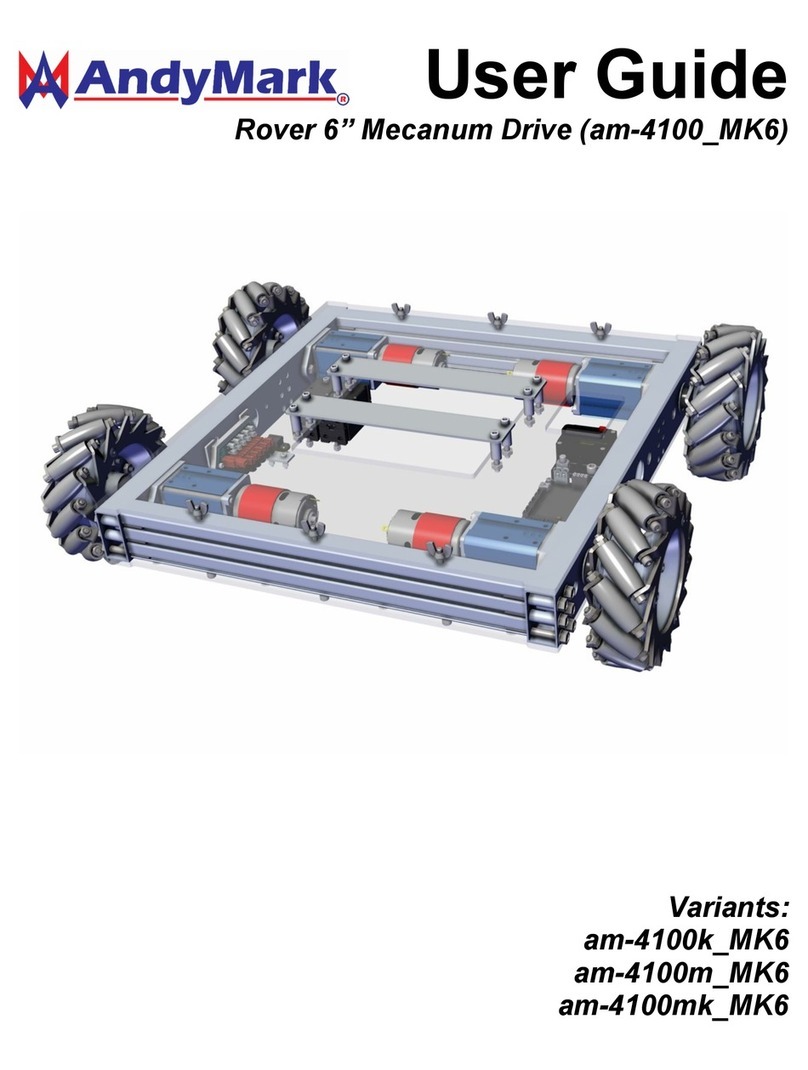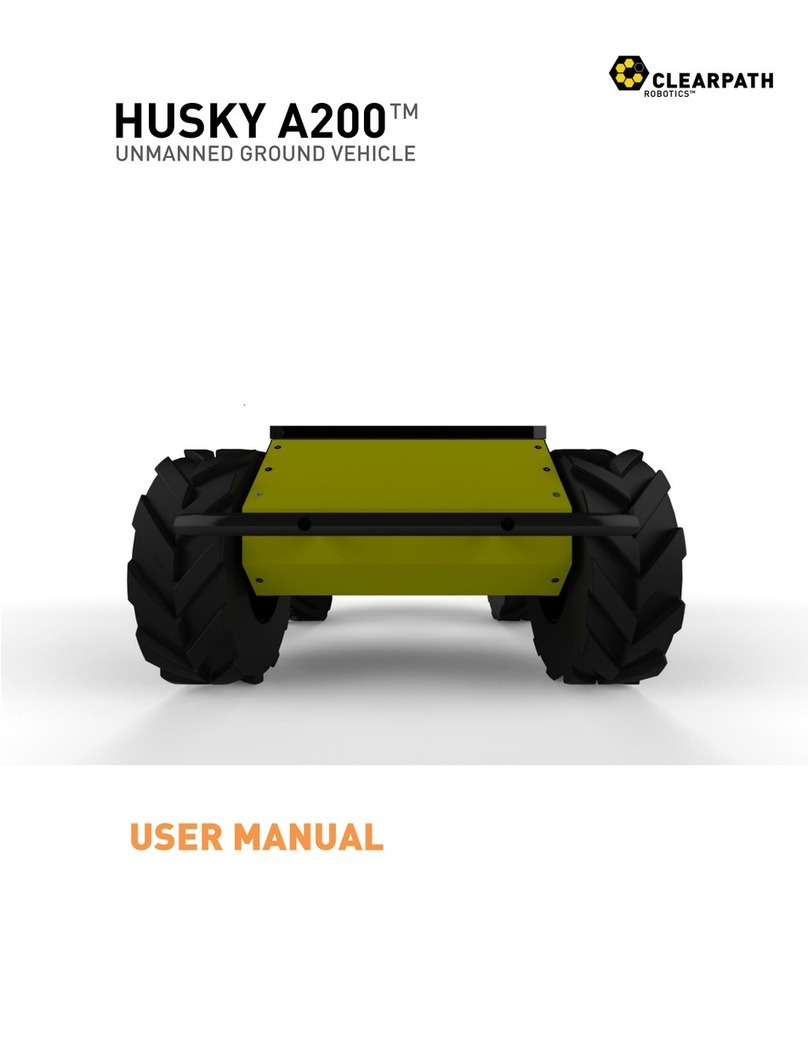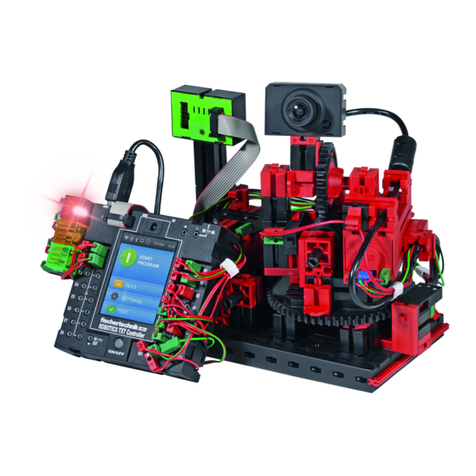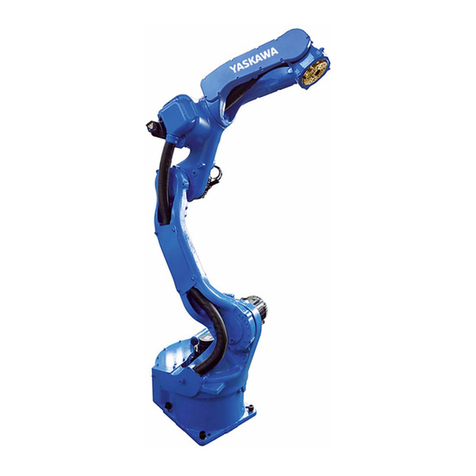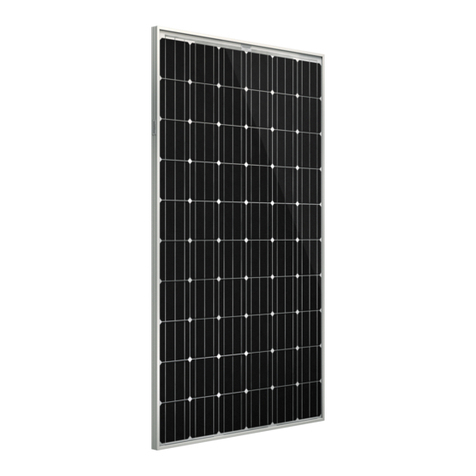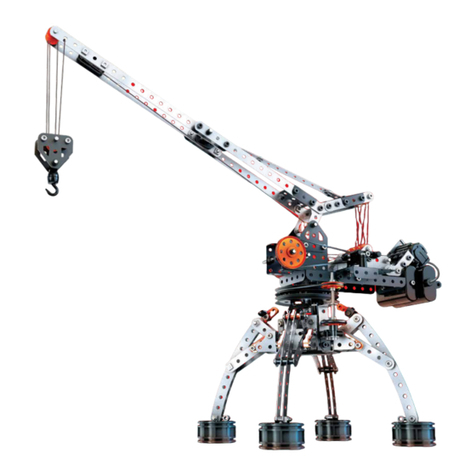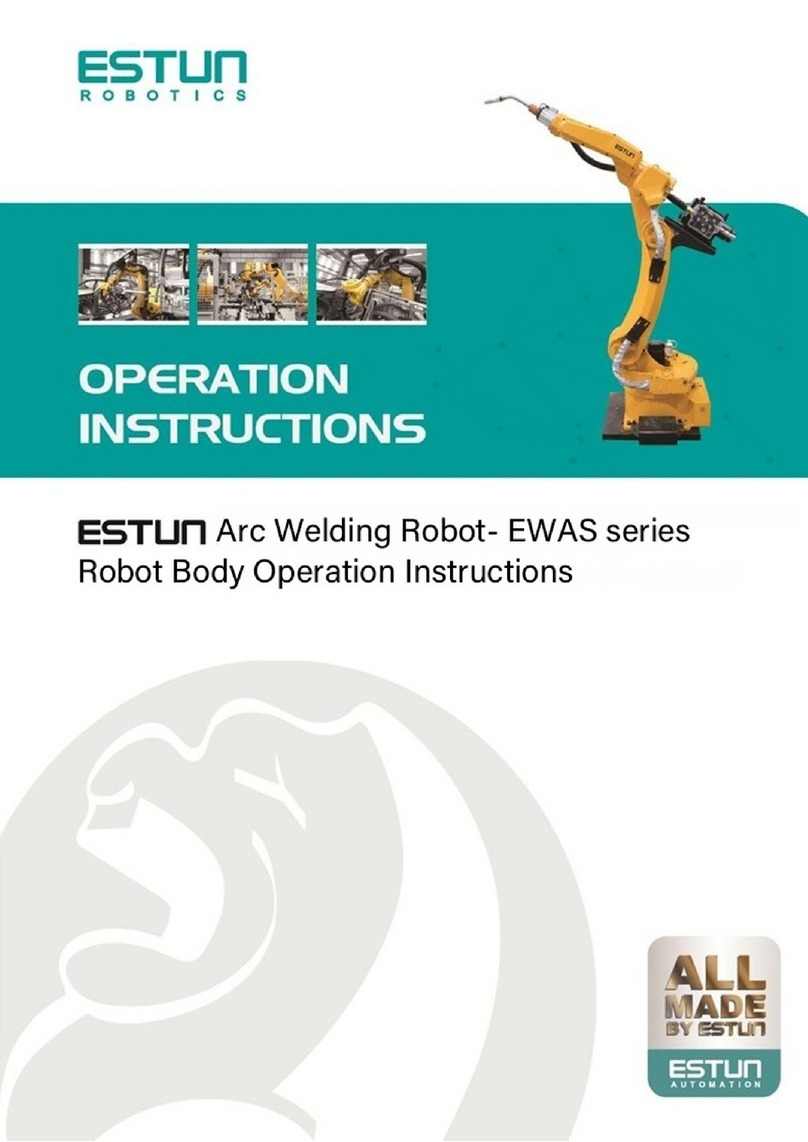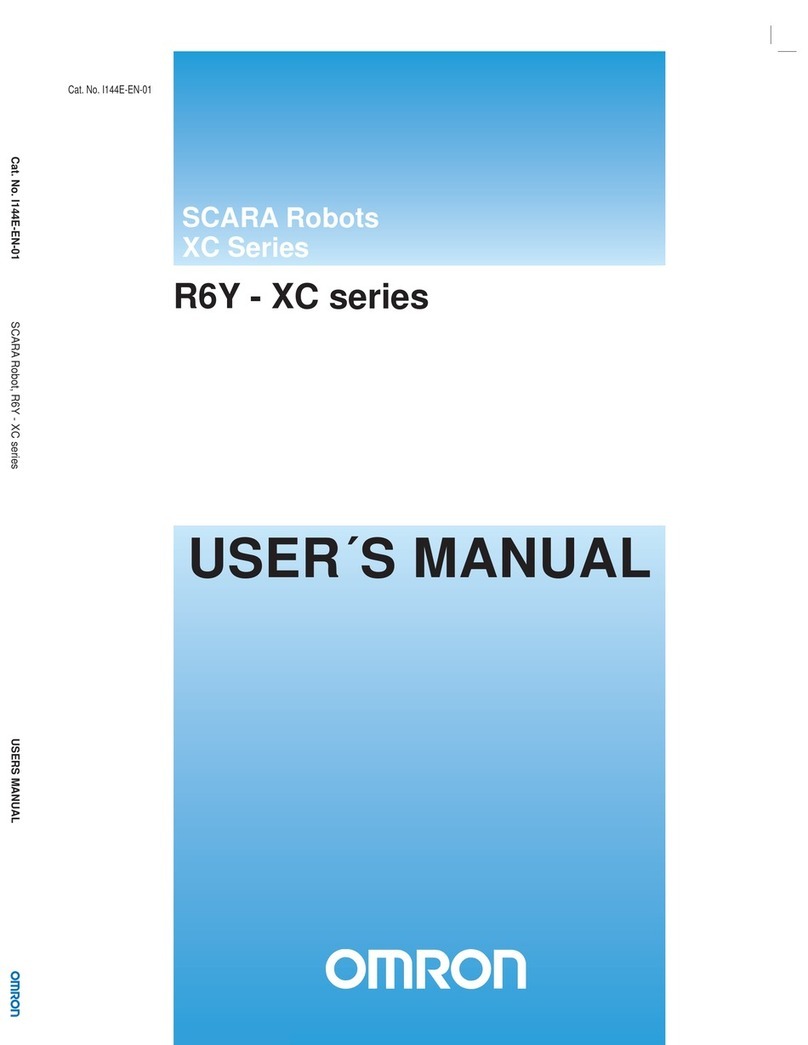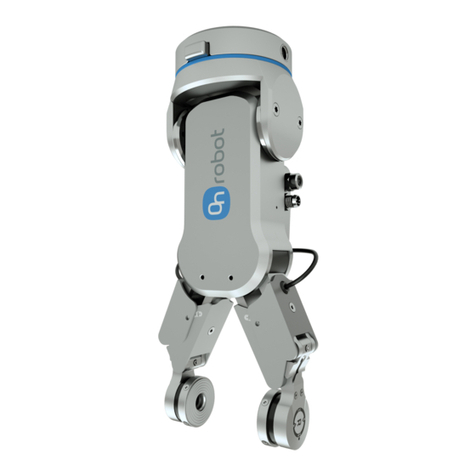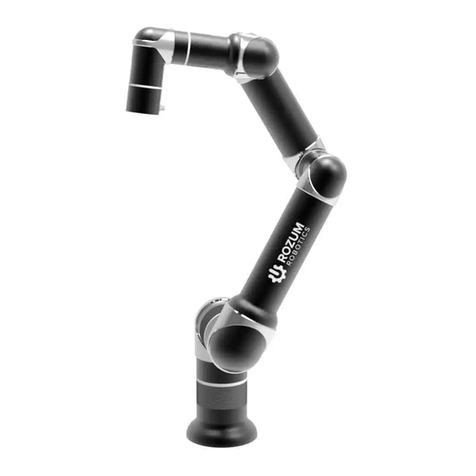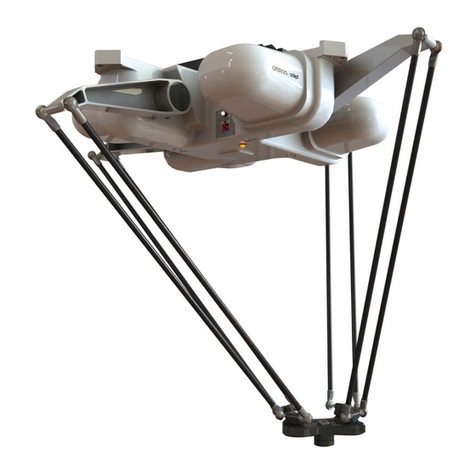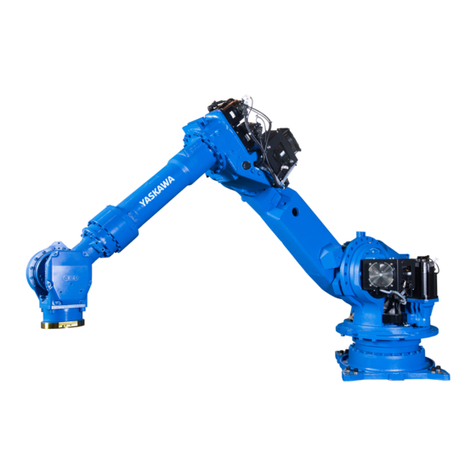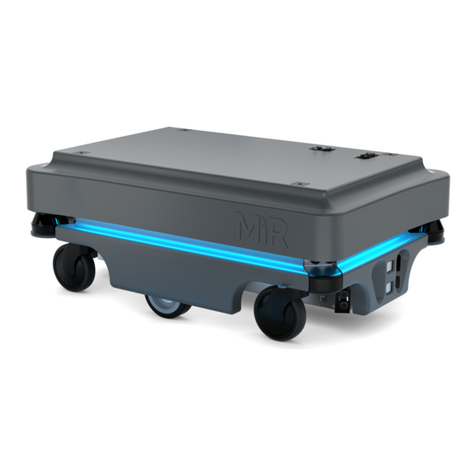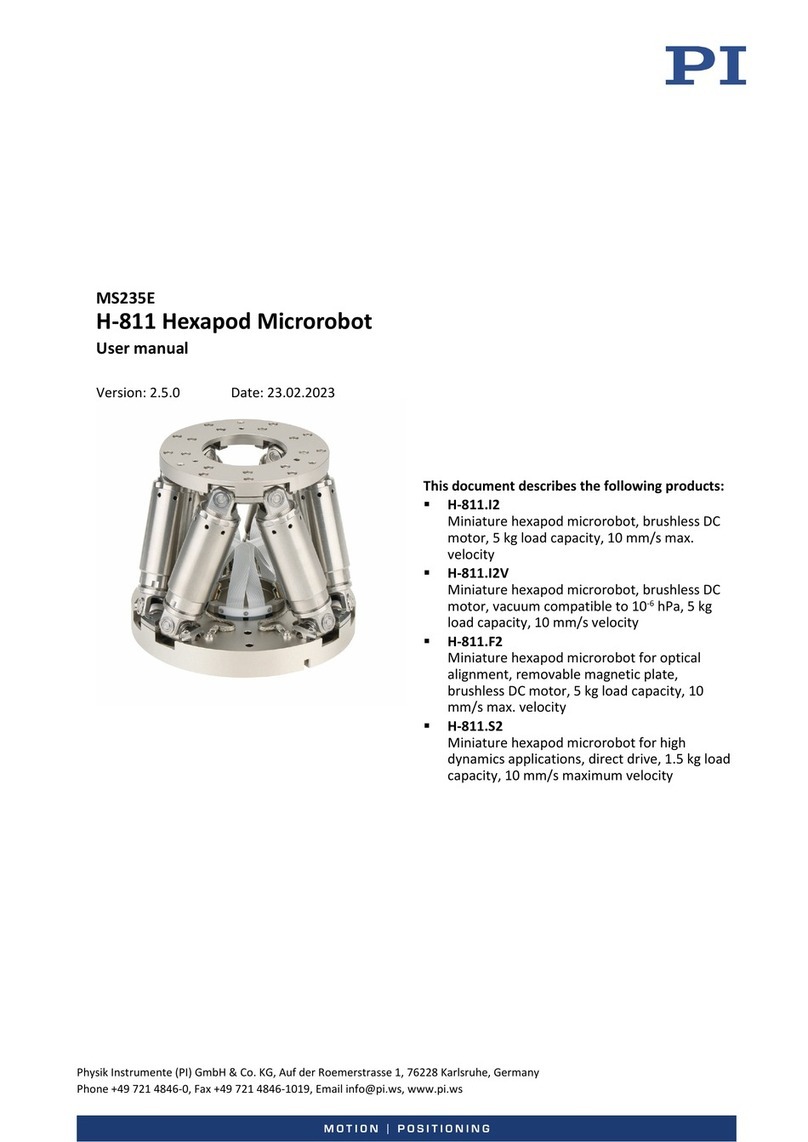Milford Instruments BigFoot User manual

1
Milford Instruments Limited, Milford House, 120 High Street, South Milford, LS25 5AQ England
Tel 01977 683665, Fax 01977 681465 www.milinst.com
Milford Instruments Ltd
BigFoot
Contents:
Kit Contents page 2
Introduction page 3
Electronics Board page 4
Programming page 5
Fitting the Servos page 6
Ankle construction page 7
Foot construction page 8
Body board/Pace wires page 9
Leg Tendons page 10
Assembling the Toe switches page 11
PCB Mounting- Setup and run page 12
Fine tuning page 13
Schematic page 15

2
Milford Instruments Limited, Milford House, 120 High Street, South Milford, LS25 5AQ England
Tel 01977 683665, Fax 01977 681465 www.milinst.com
Kit Contents
Printed Circuit Board 1
“Toe” circuit board 2
4 x AA Battery Holder 1
Set Pre-cut body parts 1
150mm 48thou dia piano wire 3
150mm 22thou dia piano wire 2
25x1mm dia brass tube 2
20x2mm dia brass tube 2
300 mmx1mm dia brass wire 2
50mmx2.5mm cable sleeving 1
500mm twin wire 1
2 way plug socket 2
Cable pins 4
2-way header pins 2
Foam Pads 2
Manual 1
Diskette 1
Additional Items:
PBASIC 1.4 Chip 1
93LC56 Chip 1
Servo Motor 2

3
Milford Instruments Limited, Milford House, 120 High Street, South Milford, LS25 5AQ England
Tel 01977 683665, Fax 01977 681465 www.milinst.com
Introduction
BigFoot is a fully walking humanoid robot. It achieves this by using only two servo
motors controlled by the Parallax BASIC Stamp microcontroller.
One servo operates to roll the centre of gravity from one foot to the other whilst the
second servo controls the pace of the legs.
BigFoot is fitted with twin LED “eyes” and “Toe” switches that make him back-up
when he contacts anything.
If fitted with good quality NiCad type batteries, BigFoot should continue to wander
for about 1 hour.
If you bought BigFoot in the UK or directly from Milford Instruments, then the
operating programme will have been pre-loaded into the EEPROM chip and will
require no further programming.
If you bought BigFoot in the USA or if you wish to experiment by changing the
programme, you may need to make a programming cable (as shown on page 5)
and to load the programme from diskette.
Once you have checked the kit items against the contents list, we suggest you work
in the order presented in this manual.
In addition to the assembly sketches shown in this manual you may also wish to
view actual construction stage photographs in the BigFoot section of our web site-
www.milinst.com

4
Milford Instruments Limited, Milford House, 120 High Street, South Milford, LS25 5AQ England
Tel 01977 683665, Fax 01977 681465 www.milinst.com
Electronics Board
If not already fitted, fit the 18-pin chip marked PBASIC1.4 and the 8-pin chip
marked 93LC56. Ensure the depression on one end of the chip corresponds to the
diagram below.
Connect the two servos to the 3-pin headers on the board- ensure they are fitted
the correct way round.
With the ON-OFF switch set to OFF, insert 4xAA Nicad batteries into the holder
and connect to the circuit board using the flying lead provided.
Switch the board ON- the servos should move to their center position for 2
seconds and then move in an oscillating manner and the LEDs toggle on and off. If
not- immediately switch OFF and check the installation of the two chips and
battery.
The electronics board is now ready and tested.
If you bought the kit in the USA then you may need to load the programme -
please do this as indicated on page 5 before proceeding further.
Note on BatteriesNote on Batteries
Servo motors have a high current requirement- for this reason it is important thatServo motors have a high current requirement- for this reason it is important that
onlyonly NiCadNiCad oror NiMH (NiMH (Nickle Metal Hydride) batteries are used.Nickle Metal Hydride) batteries are used.
Standard Zinc, Alkaline or Alkaline/Manganese batteries will not work and mayStandard Zinc, Alkaline or Alkaline/Manganese batteries will not work and may
cause loss of the embedded programme.cause loss of the embedded programme.

5
Milford Instruments Limited, Milford House, 120 High Street, South Milford, LS25 5AQ England
Tel 01977 683665, Fax 01977 681465 www.milinst.com
Programming
This section is only applicable if you bought the kit in the USA or wish to modify the
programme
If you weren’t supplied with a programming cable, make up a suitable cable as
shown in figure 2.
Connect the programming cable to the PC printer port and to the 3-pin header on
the electronics board.
Ensure your PC is in MSDOS mode (if you are running Windows ’95 etc then you
will have to instruct the machine to re-boot in MSDOS mode).
Insert the diskette in drive A
Type AA:: press Enter
Type stamptamp press Enter
Press ALT- LALT- L this will display the available .bas files
Scroll using the Up/Down keys until bigfoot.basbigfoot.bas is highlighted press Enter
The bigfoot.basbigfoot.bas programme should now be showing on the screen
Switch the electronics board ONON
Press ALT- RALT- R
The loading window should now appear and a white bar shows the programming
status.
If all is well the programme will indicate programming success and the LEDs on the
electronics board will start to flash. If programming has not been successful a
warning message will be shown- if this occurs check that the 3-pin header is the
correct way round, that the cable connections are correct and that the electronics
board switch is set to ON.
If you wish to experiment with the programme, the programme may be altered
using straightforward text when displayed on the screen. Any new version may be
saved by pressing ALT S- give the file a name other than bigfoot.bas otherwise your
original file will be overwritten!
Now return to complete the testing of the electronics board.
Programming Cable Details- Figure 2
D-25 PlugD-25 Plug
Pin 25 GND
Pin 11 BUSY
Pin 2 DO
3-Way header and socket
PC
PC

6
Milford Instruments Limited, Milford House, 120 High Street, South Milford, LS25 5AQ England
Tel 01977 683665, Fax 01977 681465 www.milinst.com
Fitting the Servos
Please take care with the following steps- it is important that the servos are squarePlease take care with the following steps- it is important that the servos are square
within the side cheeks and that the side cheeks are parallel to one anotherwithin the side cheeks and that the side cheeks are parallel to one another
Using a glue gun or double sided tape, stick one servo to the side cheek as shown
in figure 3.
Make sure the FRONT edge of the servo is parallel to the edge of the cheek
otherwise it will affect the way BigFoot walks.
Figure 3
Front of servo parallel to the front edge of side cheek and against top edge. Fit with circular horn
Now fit the second servo- this time make sure the REAR edge of the mounting
flange is parallel to the edge of the side cheek.
Figure 4

7
Milford Instruments Limited, Milford House, 120 High Street, South Milford, LS25 5AQ England
Tel 01977 683665, Fax 01977 681465 www.milinst.com
Rear edge of servo flange parallel to edge of side cheek and positioned mid-way. Fit with 2-lever
horn.
Fit the second side cheek to the servos. Make sure the edges of both cheeks are
parallel and aligned with one another.
Ankle Construction
Take a length of 1mm diameter brass wire and bend to the following shape:
Insert the wire into the ankle piece and fix in place with hot-melt glue or similar.
Fix, using hot-melt glue, an 85mm long piece of brass wire along the bottom
edge.
Repeat for the other ankle piece noting that they are handed
15mm 53mm
Stage 1
30mm 23mm
Stage 2
51mm
Bend upwards here
Figure 5

8
Milford Instruments Limited, Milford House, 120 High Street, South Milford, LS25 5AQ England
Tel 01977 683665, Fax 01977 681465 www.milinst.com
Foot Construction
Build the right foot as shown below
Fit the leg sections to the foot. Use short lengths of sleeving pushed over the ends
of the brass wire to secure in place.
Build the left foot and leg in a similar manner (note again that it will be the mirror
image of the right foot).
Secure with short piece
of sleeving
Figure 9
Ensure ankle support pieces are
perpendicular to the edge of the
foot and aligned with the edge
15mm
Hole for leg tendon
Figure 8

9
Milford Instruments Limited, Milford House, 120 High Street, South Milford, LS25 5AQ England
Tel 01977 683665, Fax 01977 681465 www.milinst.com
Body Board
Fix the servo block to the top board with hot-melt as shown- it must be
perpendicular to the top board.
Cut two 50mm lengths of brass wire. Push these through the holes in the top of the
legs and side cheeks to secure the legs to the body. Slip pieces of sleeving over the
ends to keep in place.
Bend the Left hand “Pace” wires as shown below and fit to the Left leg and “pace”
servo.
Stage 1 Stage 2 (Plan view)
Make and fit a similar (but right-handed) piece for the right leg. Secure in place
with sleeving.
30mm
10mm
10mm
18mm
Bend here
Figure 11
Figure 12
51mm
51mm
15mm
Figure 10

10
Milford Instruments Limited, Milford House, 120 High Street, South Milford, LS25 5AQ England
Tel 01977 683665, Fax 01977 681465 www.milinst.com
Leg Tendons
Support the legs and top board with the legs vertical and with the feet together and
horizontal.
Choose two diametrically opposite holes in the circular “roll” servo horn and
ensure these are level above the feet.
Cut and bend the lengths of piano wire as shown. Epoxy (or solder) the brass tube
to the lower wires making sure the end is approximately ½ way up the tube.
Thread the upper wires into the holes on the servo horn- make sure they are level.
Slip the lower wire tube onto the end and insert the lower end into the foot hole.
Ensure everything is vertical and symmetrical as shown above before completingEnsure everything is vertical and symmetrical as shown above before completing
the joint with either epoxy or solder.the joint with either epoxy or solder.
Imaginary line through chosen holes is parallel
with top piece
37mm
135mm
5mm
10mm
Top wire
15mm
Lower wire
25mm
brass tube
Figure 13

11
Milford Instruments Limited, Milford House, 120 High Street, South Milford, LS25 5AQ England
Tel 01977 683665, Fax 01977 681465 www.milinst.com
Toe Switches
Tightly crimp a 20mm long brass tube to the end of one piece of thin piano wire
and bend into the shape shown. Now solder the brass tube to the Toe-switch
boards- to the side printed with “toe switch”
Now solder the 2-pin header in place:
Fit crimps to one end of the length of 2-core wire and push the crimps into the 2-
way housing. Solder the other ends of the wires to one pair of holes on the toe-
switch board. Fix to the foot with hot melt.
Repeat for the second toe-switch bearing in mind they are handed.
40mm
30mm
30mm
40mm
10mm
End view of Toe switch pcb
Piano wire must not touch either header pin in rest
state.
Toe switch
Right foot toe-
switch
Cable to main pcb
Figure 14
Figure 15

12
Milford Instruments Limited, Milford House, 120 High Street, South Milford, LS25 5AQ England
Tel 01977 683665, Fax 01977 681465 www.milinst.com
PCB Mounting
Thread the servo cables and toe-switch leads through the slot in the top board.
Fix the battery holder in place using either tape or hot-melt glue.
Fix the main pcb in place using the two sticky pads provided.
Connect the left-foot toe switch connector to the two pins marked “Lt”, the right –
foot connector to the pins marked “Rt”, the Roll servo to the 3-pins marked “L” and
the Pace servo to the 3-pins marked “P”.
Connect the battery.
Insert batteries and switch ON.
If all is well, BigFoot will stand to attention for 2 seconds and then proceed to walk
forwards with an even pace and roll.
If the legs are not vertical and feet together when BigFoot stands to attention,
check the orientation of the servo horns and adjust as necessary.
If Bigfoot does not move forward evenly check that the two servo leads are not
interchanged.
If BigFoot still does not move forward evenly then you may need to check the wire
dimensions given earlier and the leg tendon joint procedure.
If the dimensions and procedures are followed, BigFoot WILL walk forward evenly.
Touch one of the Toe-switches- BigFoot should respond by backing up and then
shuffling either left or right before proceeding forwards again. If this is not the case
check the switch action with an ohmmeter.
Figure 16

13
Milford Instruments Limited, Milford House, 120 High Street, South Milford, LS25 5AQ England
Tel 01977 683665, Fax 01977 681465 www.milinst.com
Some fine-tuning is possible from within the software- see the next section.
Fine Tuning
You will need to have (or make) a programming cable if you wish to fine-tune the
walking action of BigFoot.
Load and list the software ( see page 5).
The set-up constants are shown in the section below, which will be found at the
beginning of the programme listing.
'BigFoot.bas
'Original programme and model by D Buckley
'This version rev1.0 by Milford Instruments- 16-4-99
'
'
'Define the constants and pin allocations
SYMBOL servoroll =6 'Roll servo connected to pin 6
SYMBOL servopace =7 'Pace servo connected to pin 7
SYMBOL lefteye =1 'Left LED eye
SYMBOL righteye =0 'Righ LED eye
SYMBOL righttoe =pin5 'Right Toe switch to pin 5
SYMBOL lefttoe =pin4 'Left Toe switch to pin 4
SYMBOL atroll =b1
SYMBOL roll =b2
SYMBOL atpace =b3
SYMBOL pace =b4
SYMBOL atX =b5
SYMBOL toX =b6
SYMBOL servoX =b7
SYMBOL m =b9 'current move
SYMBOL i =b9 'loop counter in init
'===================================================================
'THIS IS THE SET-UP SECTION
SYMBOL r_left =125 'roll_left hand side
SYMBOL r_stand =160 'upright
SYMBOL r_right =195 'roll to right hand side
SYMBOL p_left_fd =120 'left foot forwards
SYMBOL p_right_bk =p_left_fd
SYMBOL p_stand =140 'feet together
SYMBOL p_right_fd =160 'right foot forwards
SYMBOL p_left_bk =p_right_fd
SYMBOL speed =1 'servo increment =1,2(make
'to'even),3+(beware)
SYMBOL tweenpulse =10 ‘delay to ensure correct pulse
‘stream to servos
'==================================================================
SYMBOL touch_flag =bit0 'toe switches touched?
Roll Control
R_STAND and P_STAND control the attention position of BigFoot- if you cannot
adjust him mechanically to stand exactly upright then FINE adjustment of these two
constants will bring him in line.

14
Milford Instruments Limited, Milford House, 120 High Street, South Milford, LS25 5AQ England
Tel 01977 683665, Fax 01977 681465 www.milinst.com
[R_RIGHT – R_STAND] and [R_STAND – R_LEFT] adjust the left and right amount
of roll. If you change R-STAND you will also need to change R-LEFT and R-RIGHT
so that the two differences remain equal. Increasing the difference will increase roll
(and leg lift)- too much roll and BigFoot may tipple over.
Pace Control
Length of pace is determined by P_STAND – P_LEFT_FD and by P_RIGHT_FD –
P_STAND
If BigFoot has a tendency to veer in one direction - slightly change the length of
pace on one side to correct.
Shuffle Control
BigFoot shuffles to turn corners. He does this by moving forwards with SOME
weight on both feet. The effectiveness of the shuffle depends on the surface on
which he is walking.
You can fine tune this by changing the “5” figure for your own number in the
following sections:
MRT: 'Shuffle to the Right
------------
------------
jumprt:
roll =r_stand+5
'========================================================
'Adjust the "5" figure to change the turning force
'========================================================
MLT: 'Shuffle to the Left
-----------
-----------
jumplt:
roll =r_stand-5
'=======================================================
' adjust the "5" figure to vary the turning force
'=======================================================
Table of contents
